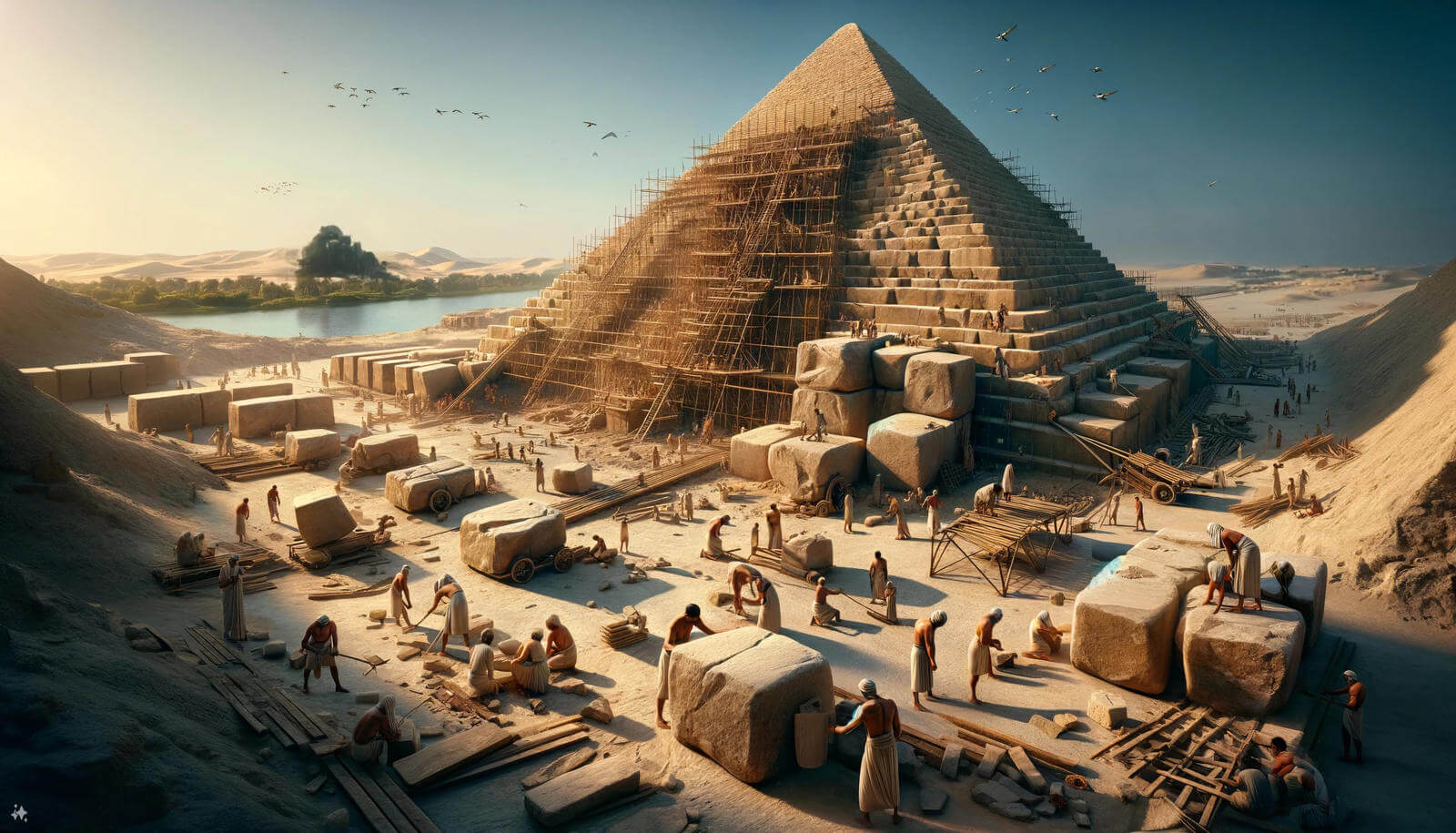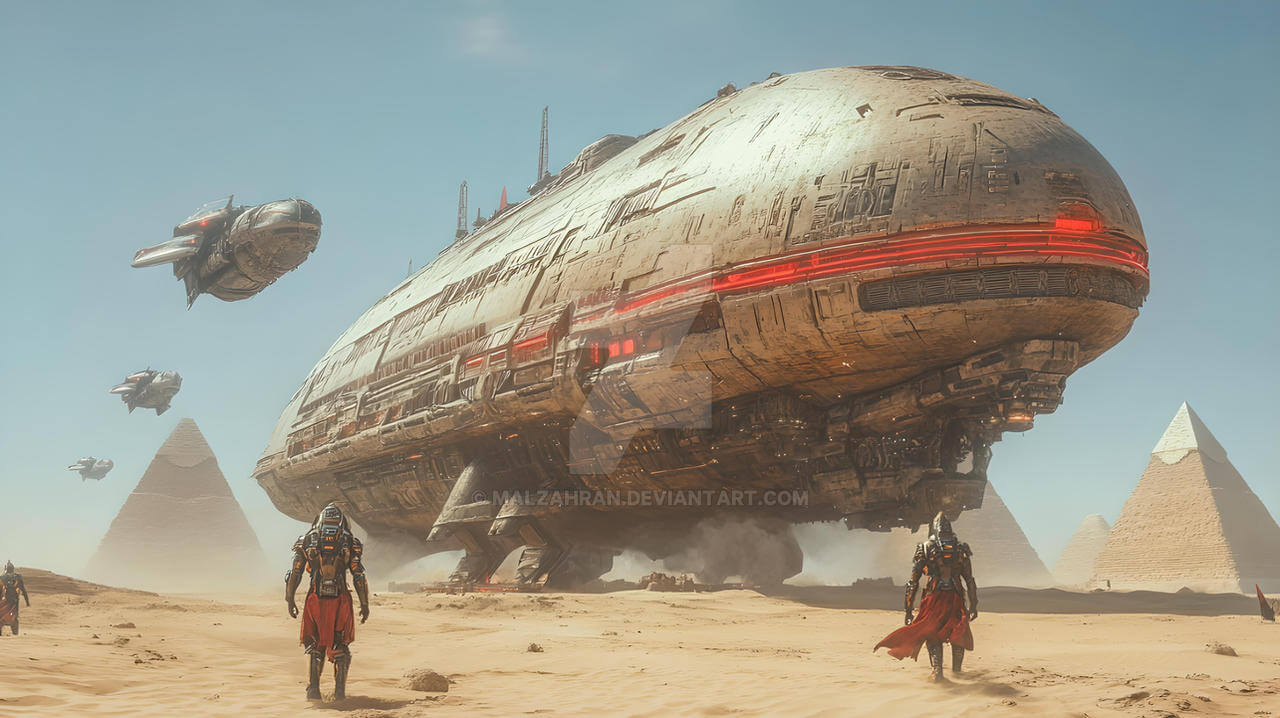
This Old Egyptian Book Exposed The Mega-Structures Under The Pyramids
Buried far beneath the sun-baked stones of Giza lies a secret that could rewrite the entire story of human civilization. But what exactly did ancient texts try to warn us about—and why has this truth been hidden for so long?
What Did the Ancients Try to Tell Us?
For centuries, ancient texts and obscure scrolls have hinted at something extraordinary hidden beneath the sands of Egypt—something far older and more mysterious than the pyramids themselves. But what if these weren’t just myths? What if an old Egyptian book, long overlooked by mainstream scholars, held the key to one of the greatest secrets buried under the Giza Plateau?
Recent findings using cutting-edge radar technology now suggest these stories might be more than just legend. A group of researchers—Corrado Malanga, Armando Mei, Filippo Biondi, and Nicole Ciccolo—have made a shocking discovery: vast underground structures beneath the Pyramid of Khafre that match descriptions found in ancient writings.
Is it possible that these old texts were actually maps—guides to a forgotten subterranean world? And why have these warnings or messages been ignored for so long?
A Lost Book and a Long-Forgotten Map
One ancient manuscript in particular has caught the attention of researchers: a cryptic Egyptian book known for referencing “chambers of initiation” and “the halls beneath the gods.” Though rarely discussed in modern Egyptology circles, this book describes a series of massive underground complexes hidden deep beneath the pyramids—somewhere “where the sun cannot reach, and the gods sleep.”
Was this book describing a mythological realm, or an actual physical location? And if it’s the latter, why is no one talking about it?
The clues were always there—stories of hidden archives, secret libraries, and lost technologies buried beneath the desert. So why has modern archaeology consistently failed to explore this possibility?
Technology Peers Where Shovels Cannot
Thanks to Synthetic Aperture Radar (SAR) technology, researchers can now see beneath the surface without ever lifting a grain of sand. By bouncing radar signals through the earth and capturing their echoes, SAR creates high-resolution images of underground features—structures that were once invisible.
Pre-Egyptian Technology Left By An Advanced Civilization That Disappeared
When Malanga and his team scanned beneath the Khafre Pyramid, what they found stunned them: geometric anomalies—straight edges, corridors, and large chambers—too precise to be natural formations.
Could these be the legendary Halls of Records? Might we be standing over entire underground cities that predate the pyramids themselves?
And if so, what else might lie buried—intact artefacts, advanced technologies, or even ancient writings older than history?
Did the Pharaohs Build Over Something Older?
Mainstream archaeology tells us the pyramids were built around 2500 BCE by the ancient Egyptians. But many independent researchers argue that the pyramids may sit atop much older structures, possibly built by a civilization lost to time.
If the newly discovered underground formations are indeed artificial, could they predate the Pharaohs by thousands of years? Might the Egyptians have known about these older complexes and built their temples and tombs to align with them—honouring or protecting something they themselves didn’t fully understand?
And who were the original builders? Were they a forgotten human civilization, or something else entirely?
Echoes of Atlantis? Or Something Even Older?
Throughout history, stories of underground chambers beneath the pyramids have surfaced repeatedly. From Herodotus to early Arab historians, many have written of deep passageways, labyrinths, and mysterious halls filled with scrolls and statues.
Plato spoke of Atlantis as a powerful and advanced civilization that fell beneath the waves—but what if part of that story is preserved beneath the sands instead?
Could these mega structures under the Giza Plateau be remnants of a civilization that vanished before written history began? And if they are, could they hold records of technologies or spiritual knowledge far beyond what we know today?
Why the Silence from Mainstream Scholars?
Despite the magnitude of these radar findings, the response from Egypt’s official archaeological community has been muted. Why? Are they sceptical, or is something else going on?
Many past attempts to explore beneath the Giza Plateau have been blocked or restricted. Notably, in the 1990s, a project to investigate a supposed underground chamber near the Sphinx was abruptly halted. Rumours persist of secret excavations and quiet cover-ups.
Could there be an intentional effort to keep the truth hidden? What might be so dangerous—or transformative—about what lies beneath?
What Might These Structures Contain?
If the old Egyptian book was right, and the radar scans confirm the presence of chambers, the next question is: What’s inside?
Could these underground halls contain:
- Ancient technologies that defy our understanding of physics?
- Archives of humanity’s true history?
- Artefacts from a time before the Flood, referenced in myths across the globe?
- Or perhaps something even stranger—non-human influences or relics?
And if these things are discovered, how will they change what we believe about human origins, our purpose, and our future?
The Giza Plateau May Be Just the Beginning
If massive mega structures are buried beneath Khafre’s pyramid, is it possible similar sites exist under the other pyramids—or even in other regions of the world?
What might lie beneath the sands of Saqqara, Abydos, or beneath the Sphinx itself? Could Earth be filled with long-forgotten vaults of knowledge, built by beings with capabilities far beyond ours?
Are we just beginning to scratch the surface—both literally and metaphorically—of Earth’s hidden past?
Final Thoughts: Are We Ready for the Truth?
The evidence is growing. From ancient manuscripts to modern radar scans, it appears the old stories were not just fantasy. Something massive and intelligent lies beneath the surface of the Giza Plateau. Something that has survived the rise and fall of empires.
But are we ready to face what it means? Are we prepared to rewrite history, to accept that perhaps our ancestors knew far more than we’ve ever given them credit for?
Or will we turn away again, afraid of the implications?
* * *
You’ll Love This One …
Archaeologists Discover Ancient Egyptian Machine That Defies Modern Technology
Throughout history, artefacts and architectural structures have surfaced that challenge everything we think we know, revealing technology so advanced that it seems impossible for their time. From intricately crafted metals and mysterious texts to complex machines that appear centuries ahead of their era, these discoveries continue to baffle modern historians, archaeologists, and scientists.
Today, we will explore some of these perplexing finds that defy logic and invite us to question our understanding of the past.
Are you ready to open your mind to these astonishing possibilities?
* * *
READ MORE: Graham Hancock: “What They Just Discovered In Egypt Terrifies The Whole World!”
Amazing Discovery! 5,000-Year-Old Soil Yields Shocking Find: Two Giant 30-Foot-Tall Bodies Unearthed In Egypt
Telegram: Stay connected and get the latest updates by following us on Telegram!
We’d love to hear from you! If you have a comment about this article or if you have a tip for a future Collective Spark Story please let us know below in the comment section.


If there really are massive underground complexes beneath the pyramids, why has their discovery been ignored or silenced for so long?